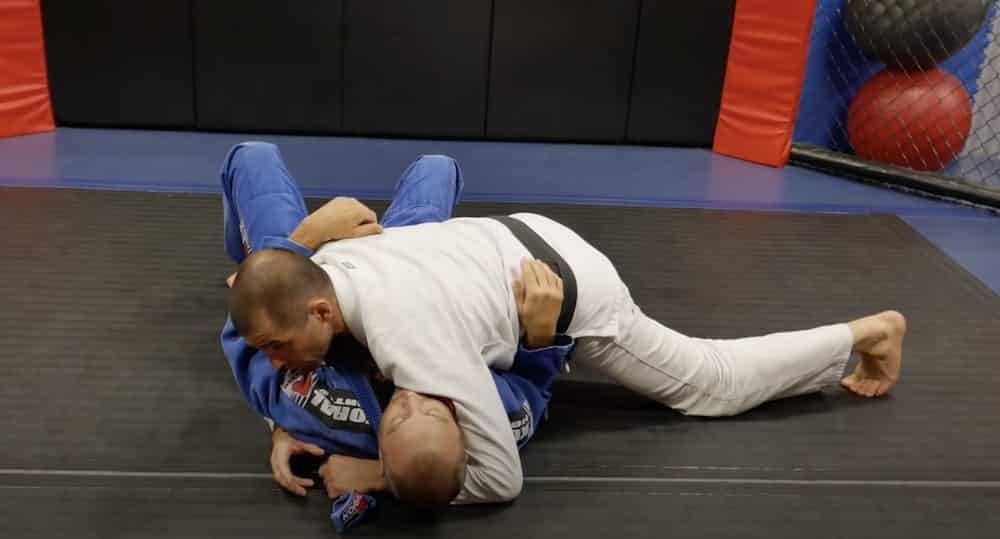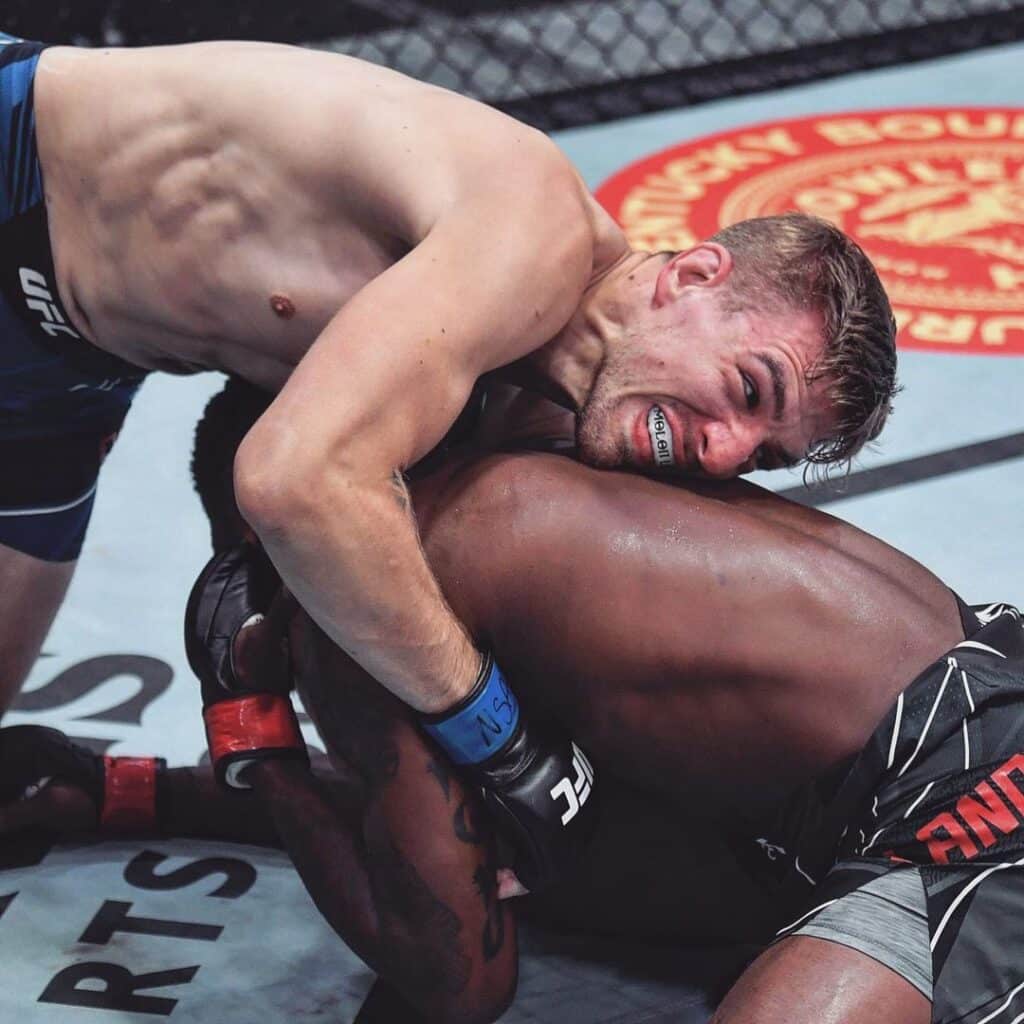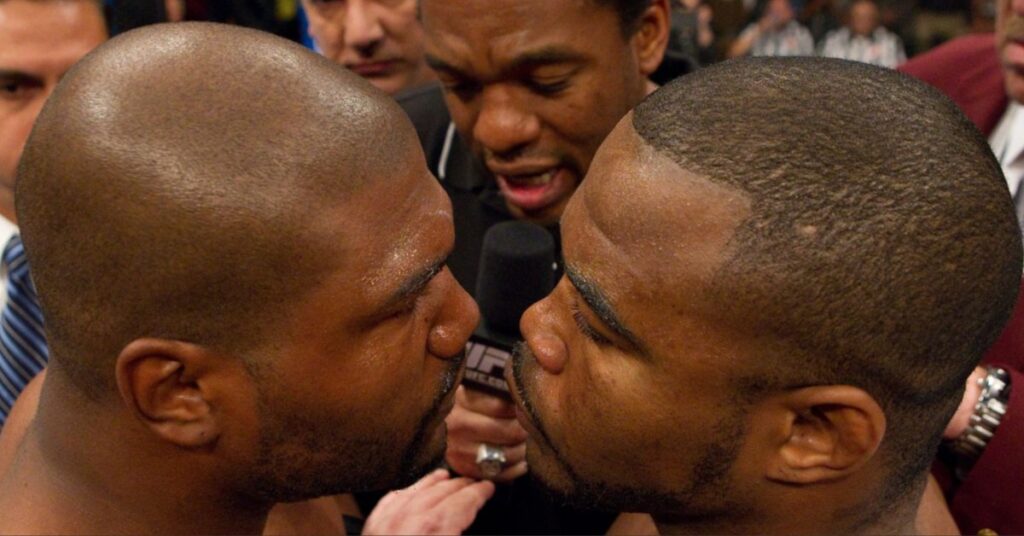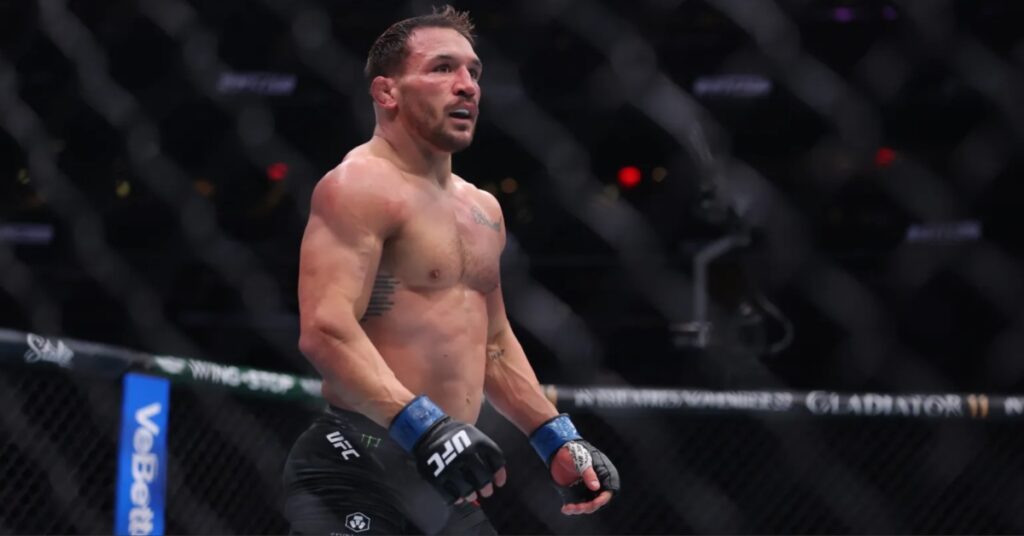Brabo Choke – BJJ Submission Explained

One of the most diverse chokes in Gi Jiu Jitsu is the brabo choke. It is a choke that has a high success rate and can be finished in a variety of different ways.
Not only is the brabo choke great in the Gi, but also has a No-Gi variation that is highly versatile. The darce choke.
Here is everything you need to know about the brabo choke. Everything from the history of the technique, how it works, and various ways to do it.

Who came up with the brabo choke?
Many within Jiu Jitsu credit the founder of Checkmat and multi time champion Leo Veira for inventing the brabo choke. The name translated from Portuguese roughly translates into English as the angry or aggressive choke.
Veira claims that he saw a white belt in the academy trying a variation of the choke. He felt that there was potential in the move, so he began coming up with how to do it.
Leo was an aggressive knee slide passer, so he would often see the opportunity to do the brabo choke. Pretty soon, he was getting everyone with his new choke.
In 2004, he won the BJJ Pans and World Championship submitting all, but one opponent with his choke. Other grapplers saw the effectiveness of Veira’s technique and began practicing and innovating his choke.
Today, the brabo choke is taught in nearly all BJJ academies and a must-know for grapplers to advance in rank.
How does the brabo choke work?
The traditional brabo choke works by using your opponent’s own lapel against them. The basic X or cross choke became easier to defend, so the lapel adds another element for grapplers to defend.
Once you lock both of your hands on their lapel and pull in this puts massive pressure on their carotid arteries. They will only have seconds to defend, submit, or go to sleep.
Brabo choke and d’arce choke
Some grapplers can get the two chokes confused, but they are actually the same choke. Just the d’arce choke is the No-Gi version that doesn’t require Gi grips to pull off.
Both require you to stay tight on your opponent and have a solid grip around their neck.
Basic brabo choke from top
From on top, the brabo choke is possible from either in half guard or side control. Both require that you put your knee on your opponent’s belly to establish control and keep them from moving.
With your opponent prone, you can now start establishing your lapel grips. Start to pull out the lapel opposite of the side you are on. Be sure to get a good amount of Gi out in order to have enough material to do the choke.
Next pass your opponent’s lapel behind your opponent’s neck to your other hand. Then you’ll need to pass their lapel back to your other hand and take a palm up grip. When you do this pass, drop your shoulder on their chest to make enough space to get the grip.
Once you have this grip, you’re going to pull your opponent into you as you crunch your body forward. Doing these two motions together takes space away from your opponent and makes the choke tighter.
Now that you have your opponent in place, cross grip the top of their lapel and pull them into you. The choke comes on fast and will force your opponent to tap.
Brabo choke variation
A common defense for the brabo choke is blocking the second grip to set the choke in. If you have your opponent’s lapel and they know what you want, they will bring their arm up their head. Blocking you from getting your top grip.
This is no problem and you can still finish your brabo choke. When they defend like this, palm their elbow with your free hand and push it across their body.
Once you have pushed the arm across their body, drop your chest on your opponent’s arm.You can now finish your brabo choke two ways.
The first is to keep your grip and just drive your chest down onto your opponent. Your 2nd option is to take your free hand, go over your opponent’s arm, and hug around their head. Then drive your chest down to finish the choke.
Brabo choke in guard
The brabo choke is also effective from your back in guard and the grips are the same. First start by breaking your opponent’s posture. Just about all submissions from the guard require this step.
Once you have your opponent’s posture broken, reach under them and start taking out their lapel. Make sure to pull enough out, so you can pass it to your other hand.
Next do your two lapel passes ending with the lapel in your original hand with a palm up grip. Then angle your body to the opposite of your lapel grip.
This gives you a clear path to take your 2nd grip and finish the submission. The previous backup grips detailed also apply when on bottom.
Reverse brabo choke
The reverse brabo choke is something Leo Veira came up with after opponents began to defend his brabo variations. They blocked the initial attempt and turned on their side to defend the backup chokes.
Veira didn’t want to lose his lapel control, so when they turned he would be the lapel tighter under their armpit. To finish the choke he would stretch his body, bringing his elbow in, and dropping his shoulder on his opponent.
Giving you a very powerful choke. With this choke, you have a third attack option against your opponent from on top.
D’arce choke from half guard
The d’arce choke or No-Gi brabo choke works basically the same way as the brabo choke in GI. Just that there are no Gi grips involved.
Just like the Gi version, you can do the No-Gi version from the same positions. Starting in top half guard, you allow your opponent to get an underhook and turn their body inward.
Doing this exposes their neck and you grab their head with one hand and pull it towards you. This gives you space to shoot your other arm under your opponent’s neck.
To lock your arms together, slide your free hand on the back of your opponent’s head. Put your elbow on the ground to bring your arm to your hand and lock hold of your bicep.
Your top hands palms your opponent’s back and your drive forward to finish the darce.
D’arce choke from turtle
When your opponent is in the turtle position, the d’arce is a great option to go to. This setup allows you to stay heavy on your opponent, while setting up your choke.
From the top position, remember to stay tight on your opponent and keep your chest glued to their back. Before moving your choke arm, it needs to be grabbing your opponent’s hip for control.
Keep the pressure on your opponent and turn your arm behind your opponent. Your arm turns from behind your opponent and comes out from under them next to their neck.
When your arm is coming through, be sure to push their head down to keep them in place. Once your hand comes through, keep your thumbs against your opponent’s neck.
Next gable grip your hands together and pull your opponent on to their side. Lock your hand on your bicep and go to finish the choke.
You can either finish by putting your chest on their back and squeeze or go to mount and squeeze.
Tips for doing the brabo choke
The brabo choke can be a highly effective technique in your arsonal, but it has many important details. Here are tips for doing the brabo choke.
- The Lapel: Remember that the traditional brabo choke requires that you take out your opponent’s lapel. Make sure to pull out as much as you can in order to be able to pass their lapel.
- The Pass: You need to pass your opponent’s lapel to your other hand and the back to your other hand.
- Deep Grip: Make sure to get a deep grip on the lapel behind your opponent’s. From the top position drop your shoulder on their chest to get an angle for a deep lapel grip.
- Pull In: Once you establish your first grip, use it to pull your opponent into you to make a tight choke.
- Don’t Give Any Space: For the choke to work, you must stay tight on your opponent with no space given.
- Get An Angle: Always take an angle when you go for a brabo choke.
- Crunch Your Body Inwards: To put on the pressure pull yourself into your opponent by crunching inward to get a tight squeeze.






